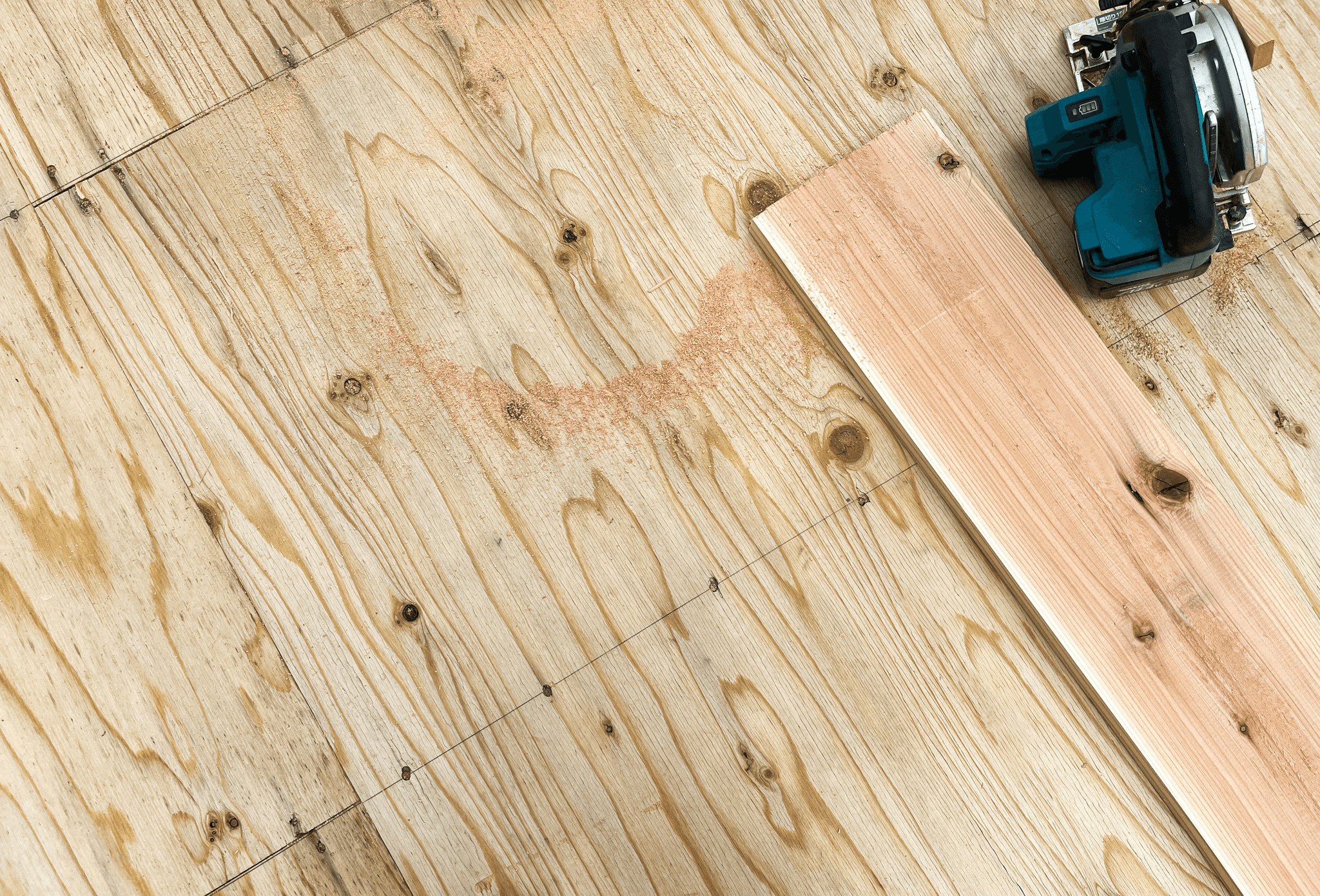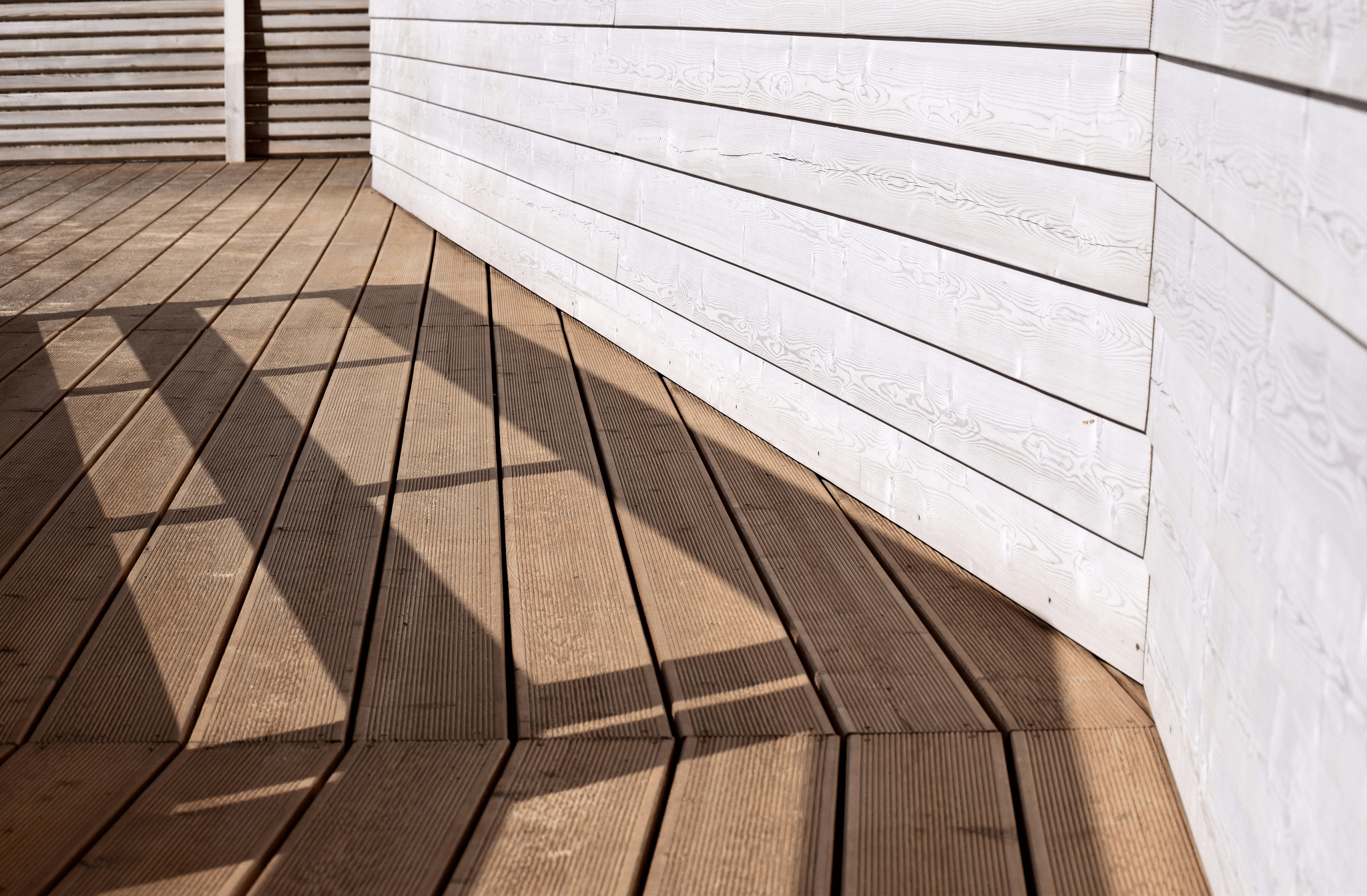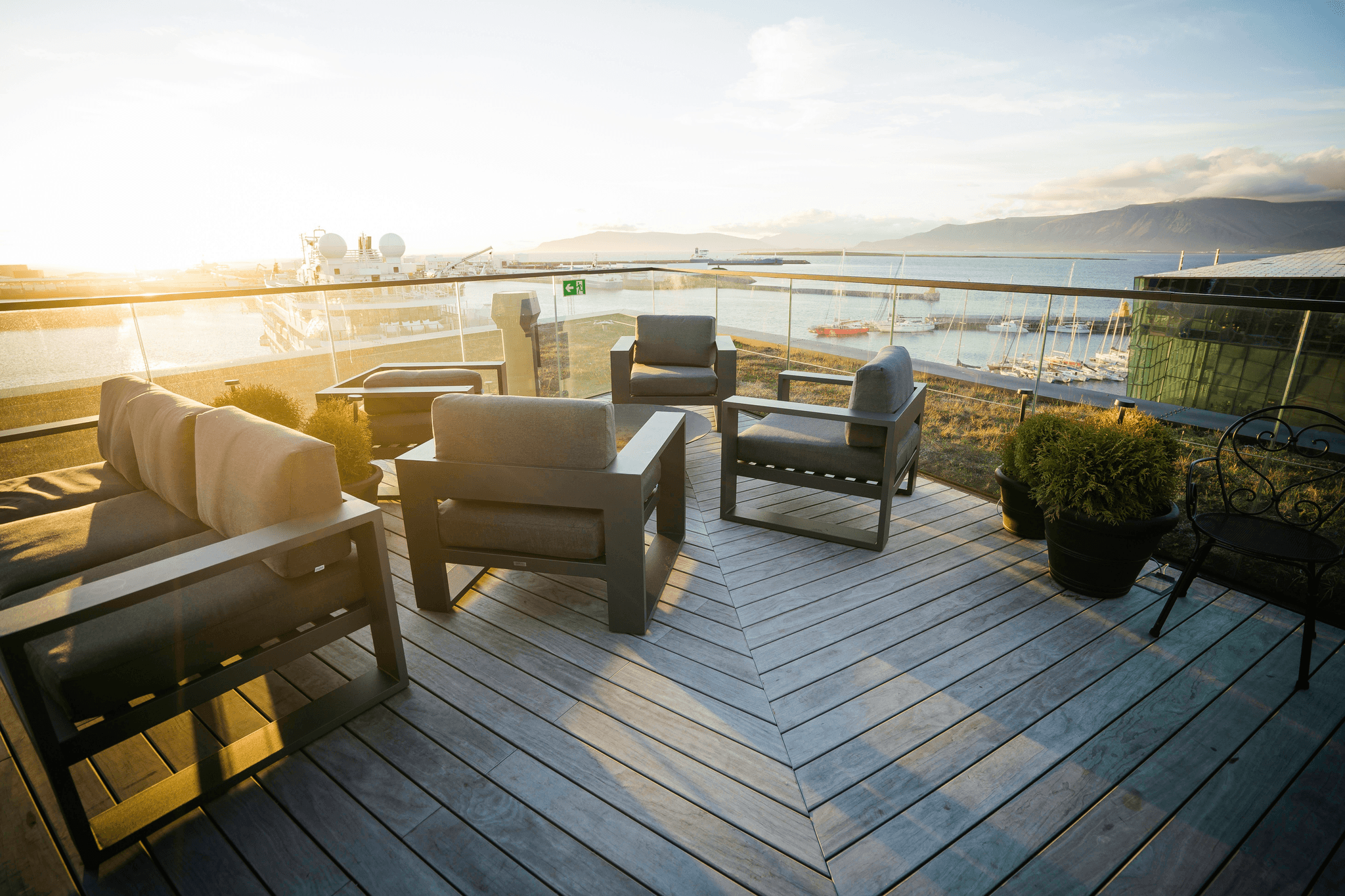Introduction

If you're considering a new outdoor living space, Trex decking might just be the perfect solution for you. This innovative synthetic decking option is crafted from a unique blend of recycled materials, making it not only durable but also eco-friendly. With its impressive range of colors and textures, Trex is designed to elevate your outdoor experience while minimizing deck maintenance.
What is Trex Decking?
Trex decking is a type of wood-plastic composite (WPC) decking that combines the best features of traditional wood and modern synthetic materials. Unlike conventional lumber, which requires constant upkeep, Trex offers a maintenance-free alternative that resists fading, staining, and mold growth. This makes it an ideal choice for homeowners looking to build a deck without the hassle of frequent repairs or replacements.
Benefits of Choosing Trex Decking
One of the standout benefits of choosing Trex decking is its remarkable durability; it can withstand harsh weather conditions without warping or splintering. Additionally, its low-maintenance nature means you can spend more time enjoying your deck rather than worrying about upkeep—goodbye to tedious deck maintenance! Plus, with options available that mimic the look of real wood at competitive prices, it's an excellent alternative to cheap composite decking.
Comparing Trex to Other Decking Options
When comparing Trex to other decking options like traditional wood or even other synthetic alternatives, it's clear that Trex holds several advantages. While natural wood may offer aesthetic appeal initially, it often falls short in terms of long-term performance and requires extensive deck support due to its weight and susceptibility to decay. In contrast, WPC decking like Trex provides superior strength and longevity without compromising on style or requiring constant attention—making it a smart investment for any homeowner looking for lasting beauty in their outdoor spaces.
The Composition of Trex Decking

Understanding WPC Decking
WPC decking has revolutionized outdoor spaces by offering a synthetic decking solution that mimics the look of natural wood without the associated drawbacks. The key here is in its composition: wood fibers provide an organic feel while plastic offers resistance to moisture, insects, and decay. This unique combination makes WPC decking an attractive option for homeowners looking for maintenance-free decking solutions.
As you consider building a deck, it's important to recognize that not all composite materials are created equal. While some cheap composite decking options may skimp on quality, Trex stands out with its superior formulation designed for longevity and durability. With WPC decking like Trex, you can enjoy your outdoor oasis without constantly worrying about deck maintenance.
Materials Used in Trex Products
Trex products utilize an eco-friendly mix of recycled materials, primarily consisting of reclaimed wood and high-density polyethylene (HDPE). This sustainable approach not only contributes to reducing waste but also enhances the performance characteristics of their products. By using these materials, Trex ensures that their decks are resistant to fading, staining, and scratching—making them perfect for families who love outdoor living.
In addition to being environmentally conscious, this combination provides exceptional stability and strength for your deck support structure. Whether you're hosting summer barbecues or simply enjoying a quiet evening under the stars, you can trust that your Trex decking will hold up beautifully over time. Plus, with minimal need for upkeep compared to traditional wood decks, you'll spend less time on maintenance and more time enjoying your space.
The Science Behind Durability
The durability of Trex decking can be attributed to its advanced engineering processes that enhance its resilience against wear and tear. Through meticulous testing and quality control measures during production, each board is crafted to withstand harsh weather conditions while maintaining its structural integrity over years of use. This level of durability means fewer worries about warping or splintering—common issues faced by traditional wooden decks.
Trex Decking Installation Process

Installing Trex decking can elevate your outdoor space, turning it into a stylish retreat perfect for relaxing or entertaining. This section will guide you through the essential steps to prepare, install, and maintain your new synthetic decking while avoiding common pitfalls. Let’s dive into the process of building a deck that not only looks great but also stands the test of time.
Preparing Your Space
Before diving into the installation of your Trex decking, proper preparation is key to ensuring a smooth project. Start by assessing your existing deck support; it should be sturdy enough to handle the weight of wpc decking materials and any additional features you plan to add, like furniture or planters. Clear the area of any debris, and ensure that your foundation is level—this will save you headaches later on when laying down those beautiful boards.
Next, consider whether you need a permit for building your deck; local regulations can vary significantly. Once you've got all the necessary approvals (if needed), it's time to gather tools and materials: you'll need screws designed for synthetic decking, a saw for cutting boards to length, and possibly even a level to check alignment as you go along. Remember: preparation isn't just about gathering materials—it's about setting yourself up for success!
Step-by-Step Installation Guide
Now that you're prepped and ready, let's jump into the step-by-step installation guide for Trex decking! Start by laying out your first board at one edge of your frame; use spacers between boards to ensure consistent gaps for expansion and contraction—this is crucial in maintaining that sleek look over time with maintenance-free decking options like Trex.
Secure each board using screws specifically designed for wpc decking; these are typically corrosion-resistant and help prevent warping or splitting over time. As you continue laying boards down, periodically check that everything remains level—an uneven surface can lead to water pooling or other issues down the line.
Once you've installed all your boards, don't forget about finishing touches! Install fascia boards around the edges if desired; this gives your deck a polished look while hiding any unsightly framing underneath. Finally, take some time to inspect everything before declaring victory on this building deck adventure!
Common Installation Mistakes to Avoid
Even seasoned DIYers can make mistakes during installation—so let’s highlight some common pitfalls when installing Trex decking! One major issue arises from inadequate spacing between boards; failing to leave enough room can result in buckling due to temperature changes in synthetic decking materials. Always remember: those little gaps are not just aesthetic—they’re functional too!
Another mistake often made is neglecting proper support beneath the deck itself; ensure that joists are spaced correctly according to manufacturer guidelines so they can adequately support wpc decking without sagging over time. If you're unsure about spacing or load-bearing capabilities, consult with professionals who specialize in deck maintenance or structural integrity.
Lastly, using non-Trex approved fasteners can lead to serious long-term issues such as rust stains or compromised durability of your new investment in cheap composite decking alternatives like Trex products—stick with what works best! By avoiding these common missteps during installation, you'll not only achieve an impressive outdoor space but also enjoy years of hassle-free enjoyment.
Maintenance Tips for Trex Decking

Cleaning and Care Essentials
Cleaning your Trex decking is straightforward and requires minimal effort, making it one of the best options for maintenance-free decking enthusiasts. A simple combination of soap and water will usually do the trick; just grab a soft-bristle broom or a pressure washer set to a low setting for deeper cleaning. Remember that regular cleaning not only enhances aesthetics but also prevents dirt buildup that could lead to mold or mildew—an enemy of all deck support systems!
For those tougher stains caused by spills or foot traffic, don’t fret! You can use specialized cleaners designed for composite materials; just make sure they’re safe for WPC decking. With these easy cleaning routines, you’ll keep your synthetic decking looking as good as new without breaking the bank on cheap composite decking solutions.
Seasonal Maintenance Routines
Seasonal maintenance routines are essential in prolonging the life of your Trex decking and ensuring its beauty shines through every season. In spring, check for any debris accumulation from winter storms—leaves and twigs can trap moisture against your deck’s surface if left unattended. During fall, consider giving your deck a thorough sweep before winter settles in; this helps prevent mold growth during colder months.
Summer is perfect for inspecting any areas needing repairs or touch-ups—after all, who doesn’t want their outdoor space looking pristine during BBQ season? Regularly checking fasteners and railings will help maintain structural integrity while ensuring safety when building decks with friends and family around.
Troubleshooting Common Issues
Even with top-notch WPC decking like Trex, issues may occasionally arise; however, most problems are easily fixable with some quick troubleshooting tips! One common concern is fading over time due to sun exposure—while this is normal with any synthetic decking material, using UV protectant sprays can help mitigate this issue significantly.
If you notice any warping or buckling in specific areas of your deck support system, check if there’s adequate ventilation underneath; poor airflow can lead to moisture buildup which causes these problems over time. Lastly, if you encounter stubborn stains despite regular cleaning efforts, don’t hesitate to consult customer service or refer back to manufacturer recommendations—they often have tailored solutions specifically designed for their products!
Environmental Impact of Trex Decking

When it comes to decking options, the environmental impact is a significant factor for many homeowners. Trex decking, made from wood-plastic composite (WPC) materials, stands out as a sustainable choice in the world of synthetic decking. This section will explore the sustainability of WPC decking, Trex's commitment to eco-friendliness, and how its environmental footprint compares to other options.
Sustainability of WPC Decking
WPC decking is crafted from recycled materials, typically combining reclaimed wood fibers and plastic waste. This innovative use of resources not only helps reduce landfill waste but also minimizes the demand for virgin materials often used in traditional wood decking. By choosing WPC products like Trex decking, homeowners can enjoy maintenance-free decking while contributing to a more sustainable future.
Moreover, WPC decking is designed to last longer than traditional wood options, which means fewer replacements over time. This longevity translates into less frequent need for new materials and reduced resource consumption throughout the lifecycle of the deck support structures. Ultimately, opting for synthetic decking like Trex can lead to significant environmental benefits without sacrificing quality or aesthetics.
Trex's Commitment to Eco-Friendliness
Trex has taken significant strides in promoting eco-friendliness within its manufacturing processes and product offerings. The company boasts that over 95% of its products are made from recycled materials, including reclaimed wood and plastic bags that would otherwise end up in landfills. This commitment not only showcases their dedication to sustainability but also positions Trex as a leader in responsible building practices within the deck maintenance industry.
Additionally, Trex employs environmentally conscious manufacturing techniques that reduce energy consumption and waste generation during production. Their focus on reducing their carbon footprint extends beyond just raw materials; they also prioritize minimizing water usage and hazardous emissions throughout their operations. For those looking at cheap composite decking alternatives that still prioritize sustainability, Trex remains a top contender.
Comparing Environmental Footprints
When comparing the environmental footprints of various decking options, it's essential to consider factors such as material sourcing, production methods, and overall durability. Traditional wood decks often require extensive deforestation practices that contribute significantly to habitat loss and carbon emissions—issues largely mitigated by using WPC products like Trex decking instead. Furthermore, while some cheaper composite alternatives may appear appealing at first glance due to lower upfront costs, they often lack the same level of sustainability found in high-quality brands like Trex.
In contrast with other synthetic options on the market today—many of which incorporate new plastics or unsustainable materials—Trex’s emphasis on recycling sets it apart significantly regarding eco-friendliness and long-term value for homeowners who care about their ecological impact when building decks. As consumers become more aware of their choices' implications on our planet’s health, selecting a brand committed to reducing waste becomes paramount for responsible home improvement decisions.
Trex Decking vs. Composite Decking Inc

When it comes to choosing the right synthetic decking for your outdoor space, Trex Decking and Composite Decking Inc are two heavyweights in the ring. Both options offer a range of benefits, but they also come with their own unique features that can sway your decision. In this section, we'll break down the key differences between these brands, compare pricing and value, and dive into what customers are saying about their experiences.
Pricing and Value Comparison
When it comes to pricing, both Trex decking and Composite Decking Inc offer competitive options within the synthetic decking market; however, there are some nuances worth noting. While you might find cheap composite decking options from Composite Decking Inc appealing at first glance, it's essential to consider long-term value versus initial cost. Investing in higher-quality WPC decking like Trex could save you money on deck maintenance down the line due to its durability and low upkeep needs.
In terms of overall value proposition, many homeowners find that spending slightly more upfront on Trex pays off due to its longevity and aesthetic appeal compared to cheaper alternatives from other brands. Additionally, when factoring in potential savings from reduced deck maintenance over time with Trex products versus ongoing costs associated with maintaining lower-quality composite decks from other manufacturers—it's clear why many opt for quality over price alone.
Ultimately, while both brands have their merits regarding cost-effectiveness in building decks—Trex tends to edge out when considering durability alongside aesthetic appeal as part of your investment strategy.
Customer Reviews and Feedback
Customer feedback plays a crucial role in understanding how each brand holds up under real-world conditions; after all, hearing from fellow homeowners can provide invaluable insights into performance over time! Many reviews highlight Trex's superior performance in terms of resistance against fading or warping compared with some offerings from Composite Decking Inc—which often receive mixed reviews regarding longevity under harsh weather conditions.
Moreover, users rave about how easy it is to maintain their Trex decks thanks to minimal required upkeep—often mentioning they spend more time enjoying their outdoor spaces rather than worrying about deck maintenance! On platforms like home improvement forums or social media groups dedicated specifically toward synthetic decking discussions—Trex consistently garners praise for both aesthetics as well as functionality among homeowners who prioritize quality materials when choosing products for their homes.
In contrast though—some customers report dissatisfaction with certain lines offered by Composite Decking Inc citing issues such as discoloration or difficulties during installation processes which can lead prospective buyers toward favoring established names like Trex instead!
Conclusion

In the world of outdoor living, Trex decking stands out as a premier choice for homeowners seeking a blend of beauty, durability, and low maintenance. Its innovative design and composition make it an ideal option for those looking to build a deck that lasts without the hassle of constant upkeep. With its resistance to fading, staining, and mold, Trex decking offers a maintenance-free decking solution that allows you to spend more time enjoying your outdoor space rather than worrying about deck maintenance.
Why Trex Decking is a Top Choice
Trex decking has earned its reputation as a top choice due to its impressive durability and aesthetic appeal. Made from high-quality WPC (wood-plastic composite) materials, it provides the look of real wood without the drawbacks like splintering or rotting. Homeowners appreciate that Trex products are designed for longevity; they can withstand harsh weather conditions while requiring minimal deck support compared to traditional wood options.
Exploring Alternatives Like Composite Decking Inc
While Trex is often seen as the gold standard in synthetic decking, alternatives like Composite Decking Inc also offer unique benefits worth considering. These options may come at a lower price point, appealing to those on a budget looking for cheap composite decking solutions without sacrificing quality entirely. However, it's essential to weigh their pros and cons against Trex's superior durability and brand reputation before making your final decision.
Making the Right Decision for Your Home
Choosing between various decking options can feel overwhelming; however, understanding your needs will guide you toward the right decision for your home. If you're after longevity with minimal upkeep, Trex decking is hard to beat with its maintenance-free qualities and robust construction. On the other hand, if budget constraints are significant or if you prefer exploring other synthetic alternatives like Composite Decking Inc., ensure you evaluate their performance in relation to what matters most in your outdoor space.
